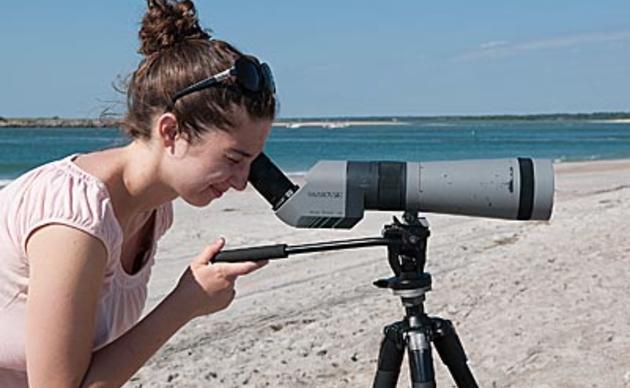Wind Power
Audubon North Carolina endorses the official position of the National Audubon Society on wind power. Audubon North Carolina strongly supports properly sited wind power as a renewable energy source that helps reduce the threats posed to birds and people by climate change. However, we also advocate that wind power facilities should be planned, sited, and operated in ways that minimize harm to birds and other wildlife, and we advocate that wildlife agencies should ensure strong enforcement of the laws that protect birds and other wildlife.
What We Are Doing
Audubon North Carolina has played a leadership role in North Carolina to ensure that the state’s growing wind industry can continue to expand while protecting birds and our natural resources. Audubon North Carolina experts have served on the North Carolina Wind Working Group and the Technical Advisory Group of the Environmental Management Commission, provide key input into the University of North Carolina-Chapel Hill offshore wind study, and have provided Important Bird Area (IBA) and bird concentration data information to agencies, developers and community groups. Audubon’s efforts have helped guide appropriate development and siting of wind energy projects in North Carolina.
Evaluating Individual Wind Projects
Session Law 2013-51 (House Bill 484) governs the siting and operation of wind projects in North Carolina. Responsible wind developers typically engage Audubon early in the planning process to ensure that projects avoid significant impacts to birds. Audubon North Carolina appreciates this early outreach and evaluates the impact of proposed commercial wind projects using several criteria:
- Proximity to IBAs – Is the project within or near an Important Bird Area (IBA) or critical foraging habitat?
- Habitat Loss – Will the project result in direct loss of habitat (or indirect loss through bird avoidance), either for breeding, migration, or wintering? Is there a plan in place to mitigate those losses?
- Migratory Pathway – Is the project within a known migratory pathway or area commonly used by birds to enter or exit critical habitat?
- Rigor of Data Collection and Analysis – Does the project make thorough use of existing data? Does the project have a plan for pre and post construction study and monitoring? Does it conform to widely used methods and best practices, including the USFWS Land-Based Wind Energy Guidelines?
- Cumulative Impacts – What are the suspected cumulative impacts of this project on bird populations, habitat availability, connectivity, etc. when other nearby projects are also considered?
Did this issue get you fired up? Sign-up for our NC Action Alert network to stay informed as we work to protect birds in North Carolina.
How you can help, right now
Donate to Audubon
Help secure the future for birds at risk from climate change, habitat loss and other threats. Your support will power our science, education, advocacy and on-the-ground conservation efforts.
Sign Up For Our eNewsletter
Keep up-to-date on all that happens with Audubon North Carolina's research, events and volunteer opportunities.




